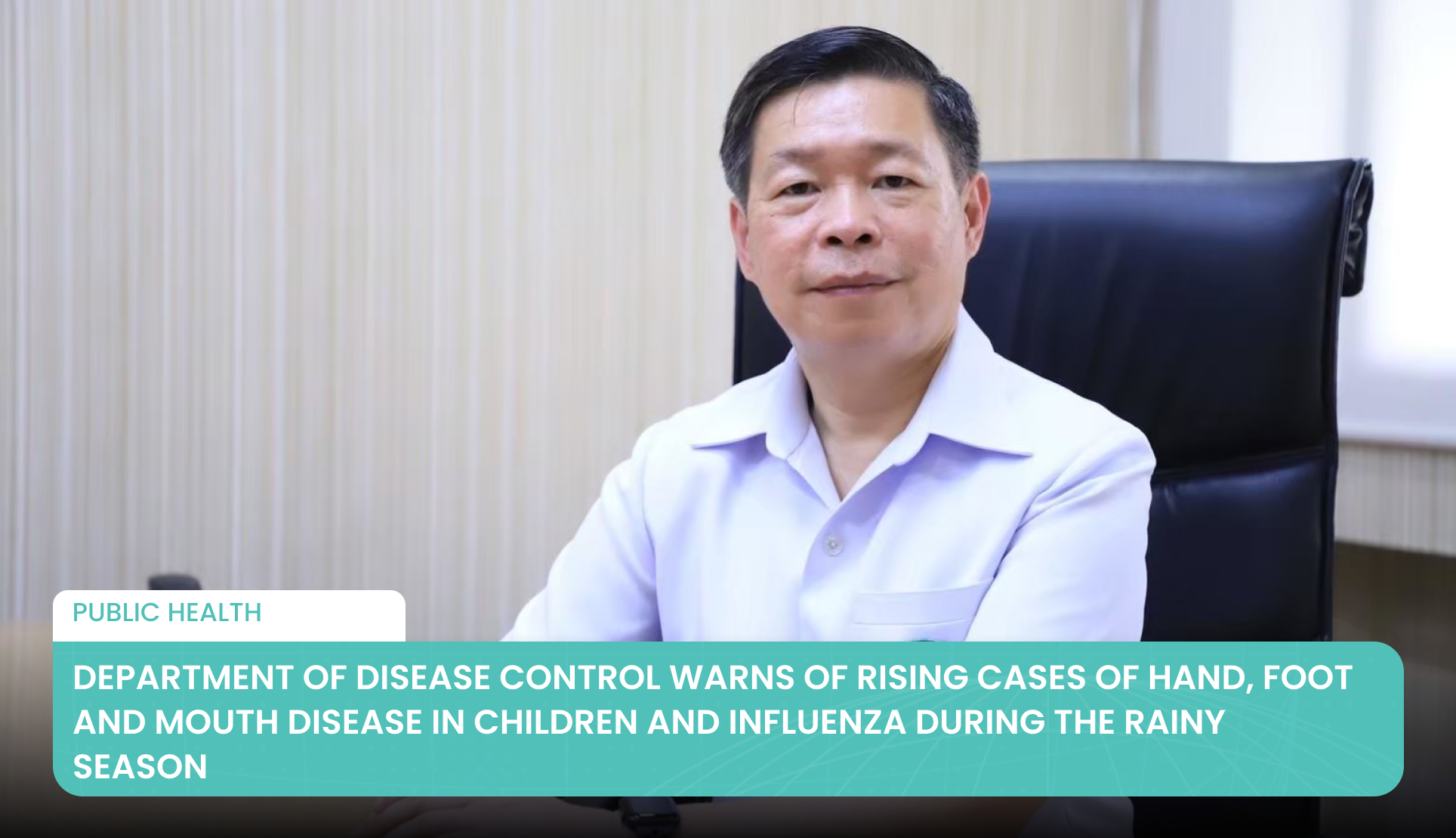
Department of Disease Control Warns of Rising Cases of Hand, Foot and Mouth Disease in Children and Influenza During the Rainy Season
The Department of Disease Control has issued a warning of increasing cases of hand, foot and mouth disease (HFMD) in children and influenza, both of which are common contagious illnesses that tend to surge during the rainy season each year. These diseases are frequently found in children and, in some cases, may lead to complications requiring them to miss school and potentially affecting their health. Parents are advised to take children with fever or illness to see a doctor and keep them at home to prevent further spread.
The Department of Disease Control has issued a warning of increasing cases of hand, foot and mouth disease (HFMD) in children and influenza, both of which are common contagious illnesses that tend to surge during the rainy season each year. These diseases are frequently found in children and, in some cases, may lead to complications requiring them to miss school and potentially affecting their health. Parents are advised to take children with fever or illness to see a doctor and keep them at home to prevent further spread.
According to surveillance data (DDS) between 1 January and 30 September 2025, there were 10,344 cumulative cases of HFMD in Bangkok, with no reported deaths. This corresponds to an incidence rate of 239.99 per 100,000 population. The highest incidence rates were recorded in Ratchathewi District (2,243.56 per 100,000), followed by Bang Na District (783.48) and Bang Kho Laem District (713.20). Cases were mainly found among children aged 0–4 years (5,916 cases), followed by 5–9 years (3,690 cases), and 10–14 years (494 cases). Most patients were Thai nationals, while a smaller proportion were from neighboring countries including Myanmar, Laos, and Cambodia.
For influenza in Bangkok, the same surveillance system recorded 124,091 cumulative cases and 2 deaths between 1 January and 30 September 2025. This equates to an incidence rate of 2,314.53 per 100,000 population, with a mortality rate of 0.037 per 100,000. The districts with the highest incidence rates were Bang Rak (14,657.36 per 100,000), Ratchathewi (12,931.42), and Phaya Thai (8,644.86). In September, influenza cases showed an upward trend, with the majority of patients aged 30–39 years (19,795 cases), followed by 5–9 years (19,416 cases), and 20–29 years (17,998 cases). As with HFMD, most patients were Thai, with additional cases among nationals from Myanmar, Laos, and Cambodia.
Hand, foot and mouth disease occurs year-round but peaks during the rainy season. It is caused by enteroviruses, most commonly Coxsackievirus A6, which usually results in mild illness. However, Enterovirus 71 (EV71) is of greater concern, as it may lead to severe complications such as myocarditis or brainstem encephalitis, which can rapidly become life-threatening. Infants and children under five years of age are at the highest risk, especially in nurseries, kindergartens, or crowded places with poor hygiene. Severe symptoms such as unusually high fever, refusal to eat, lethargy, seizures, persistent vomiting, or difficulty breathing require immediate medical attention. Preventive measures include frequent handwashing with soap and water—since alcohol-based sanitizers are ineffective against this virus—and regular cleaning of toys and items that children commonly touch.
Influenza is an acute respiratory infection caused by the influenza virus and occurs every year among both children and adults, with higher prevalence in the rainy and winter seasons. The virus spreads through respiratory droplets from coughing, sneezing, or talking. Symptoms often begin with high fever, muscle aches, and fatigue. Severe symptoms—such as chest pain, difficulty breathing, severe muscle pain, cyanosis, seizures, dehydration, or worsening of chronic conditions—require urgent medical care to reduce health risks and prevent further transmission.
The Department of Disease Control emphasizes the importance of strict self-protection measures to reduce infection risks: wearing a mask when coughing, sneezing, or staying in crowded places; frequent handwashing with soap and water; avoiding close contact with sick individuals; and ensuring that children showing signs of fever, cough, breathing difficulties, or fatigue stay home from school and receive prompt medical treatment.
Source:
Articles in this category are written by our editorial team to keep you informed about the latest healthcare and medical tourism news.

